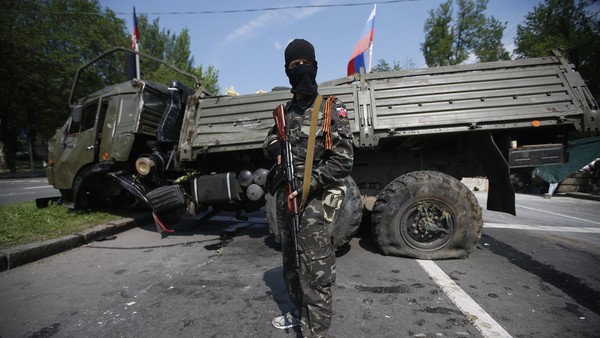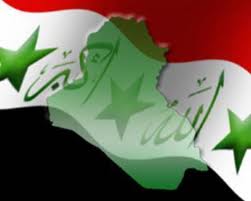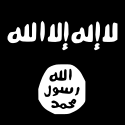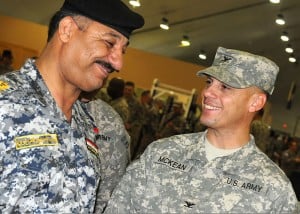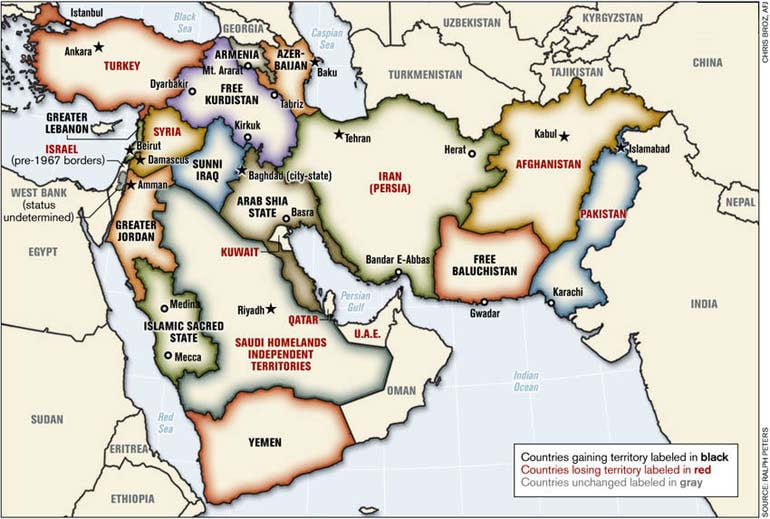August 28, 2014 7:22 pm
Ukraine: Russia’s new art of war
Nato has struggled to counter Moscow’s tactics in conflict where traditional might is only a part
Unorthodox tactics are nothing new in conflict. “The Russians were the adversary who dropped the sword and picked up a club,” wrote Leo Tolstoy in War and Peace, speaking of field marshal Mikhail Kutuzov’s partisan campaign against Napoleon.
“Not asking about anyone’s tastes or rules, with stupid simplicity, but with expediency.”
In Ukraine, Russia has again taken up a club. But Moscow’s intervention in recent months is more than just an opportunistic ploy. In its scale, the covert war in Crimea and the Lugansk and Donetsk regions has set a high watermark in the art. It has laid bare the weakness of Nato’s ossified military deterrent – the centrepiece of international security order that was supposed to be hardening, not weakening. And it has become a lightning rod for a debate about the future of conflict.
When Nato chiefs meet in Wales next week for the most important summit the world’s biggest military alliance has held in 20 years, their thoughts will be dominated by Moscow’s actions against its neighbour.
For some of Nato’s most senior military strategists and for many of the most important figures in international affairs the post cold war world is at an inflection point: a common orthodoxy in Western thought – the notion of a globalising world in which greater prosperity was ultimately analogous to stability – has been again thrown into contention.
In public, Nato chiefs talk of Vladimir Putin’s 20th century mentality. The alliance on Thursday accused Moscow of having 1,000 troops in Ukraine in an overt sign of Russia’s direct military involvement in the conflict.
But, in private, they are more candid – and worried – about the 21st century tactics Mr Putin is using. Russia’s actions in Ukraine have exploded the notion that expansive communications technologies and economic interdependence were fostering a kind of grand bargain.
In depth

Pro-Moscow separatists in eastern Ukraine have escalated the political turmoil that threatens to tear the country apart
Further reading
Further reading
Instead nationalism, genocide, irredentism and military aggression, which were thought to be in decline, are alive and well, finding new and powerful means of being deployed in Ukraine and beyond.
“We are entering a brave new world here,” says Admiral James Stavridis, supreme allied commander of Nato until last year and now dean of the Fletcher School at Tufts University.
“And I use that expression really thinking about the novel [by Aldous Huxley] . . . it’s anything but a brave new world. It’s a frightened, unstable world and we need to wake up and realise that.”
Nato refers to this form of conflict as “hybrid war”. The phrase refers to a broad range of hostile actions, of which military force is only a small part, that are invariably executed in concert as part of a flexible strategy with long-term objectives.
Predictably, the most lucid exposition of the concept is Russian. In February 2013, Valery Gerasimov, the newly appointed chief of Russia’s general staff, penned an article in the Russian defence journal VPK.
“Methods of conflict,” he wrote, have changed, and now involve “the broad use of political, economic, informational, humanitarian and other non-military measures”. All of this, he said, could be supplemented by firing up the local populace as a fifth column and by “concealed” armed forces.
War and peace, Mr Gerasimov wrote, in remarks that now seem prophetic, are becoming more blurred.
Mr Gerasimov quoted the Soviet military theoretician Georgii Isserson: mobilisation does not occur after a war is declared, but “unnoticed, proceeds long before that”.
To that point, Western intelligence services are in little doubt Russia’s meddling in Ukraine began years ago. Since 2010, for example, Ukrainian computer systems have been the target of a virulent piece of computer malware known as Snake.
The snake infections, which include dozens of diplomatic and governmental systems, are a powerful espionage tool that has given its operators unfettered access to Kiev’s secrets.
Other levers of power have been overtly pulled for years: Russia has used its gas pipelines as a tool to cajole Ukrainian policy makers since at least 2008.
With February’s ousting of Viktor Yanukovich, Ukraine’s then president, Russia’s actions have moved to a more physically robust phase in the Gerasimov doctrine. There is no question that Russia has supplied separatist rebels in eastern Ukraine with a lethal arsenal of heavy weaponry: from tanks and artillery to sophisticated anti-aircraft systems such as that which brought down Malaysia Airlines MH17.
In Crimea, the Kremlin deployed thousands of unmarked spetsnaz squads and in eastern Ukraine its agents have been operating extensively.
“I think it’s not usually appreciated what an enormous violation of international law this has amounted to,” says Jonathan Eyal, international director at the Royal United Services Institute, the prominent London-based military think-tank.
“We have spent nearly 200 years defining rules about conflict. Sending in soldiers without markings, introduced in such a cavalier way, denying their existence with absolutely no blush and saying anyone can buy a uniform in a shop – and a month later rewarding them with medals – we have to go back a long way to see something like that.”
Many of the covert tactics used in the hybrid war playbook are far from new. “Half the history of warfare is this stuff,” says Anthony Cordesman, former director of intelligence at the Pentagon and now Arleigh Burke chair of strategy at the Washington think-tank CSIS. What is novel, however, is the comprehensive way in which such tactics are being used, and the modern update they have had.
Mr Cordesman is among those who caution Nato over fretting too much over how it can combat a “hybrid” threat. Economic sanctions, he says, are a powerful tool that many do not give enough credit to.
But what has got Western spymasters particularly concerned has been the scale of the Russian disinformation campaign, both domestically and abroad. The Kremlin’s grip on Russian media was always tight, one British security official observed this year, but since the Ukrainian crisis, the degree of control has become “staggering”.
The rhetoric out of Russian media channels is expansive and alarming.
“This crisis is not about Ukraine,” Mr Eyal notes. “This crisis is about the status quo at the end of the cold war.”
The reason Russia’s actions in Ukraine have stirred such controversy is because many in the west fear a repeat of such tactics on European soil. Certainly, for governments of the Baltic and eastern Europe, the issue is real.
Russia has a history of obstructing trade in Lithuania, for example. In March Moscow imposed a ban on all food transported through the Lithuanian port of Klaipeda, the largest in the Baltics. The Kremlin’s relations with Lithuania are sensitive because the country provides the most direct land access to Russia’s Kaliningrad enclave.
In Bulgaria Gazprom, Russia’s state-backed energy group, was recently exposed dictating new laws to energy officials in Sofia ahead of a proposal being made to parliament. Questions, raised by the EU, local Bulgarian politicians and the US, swirl around corruption in the South Stream energy pipeline over the awarding of huge construction contracts to certain corporate entities.
Elsewhere in the Baltics, Russia has ratcheted up social and political pressure. “They are creating psychological enclaves in the Baltic states,” argues Mr Eyal.
The Bulgarian government is the most corrupt in Europe, a European Commission report this year said. Separately European intelligence agencies including Germany’s BND fear the entire Bulgarian political system is compromised by criminal organisations linked to the Russian state and by Moscow’s intelligence agencies.
“In many circumstances, the Russians in all of these situations are looking for trouble,” says Mr Eyal. “They are trying to find little sparks that will create fires.”
Nor is the challenge solely for the former states of the Warsaw Pact.
Energetic bear is a cyber espionage weapon uncovered by cyber security analysts this year which has infected dozens of industrial control systems in Europe’s energy infrastructure. Its targets include renewable energy sources such as wind turbines and biomass fuel plants, and are spread across Europe, as far south as Spain.
Energetic bear can monitor energy consumption in real time and it can disable the systems it has infected. Whoever controls energetic bear – the creator remains unknown – could seriously damage Europe’s energy grid. One senior Western security official was clear who that controlling power was: Russia.
Anders Fogh Rasmussen, Nato’s secretary-general, warned in June that Russia was secretly funding European environmental groups in order to hinder the spread of fracking in Europe and thus preserve dependence on Russian energy. The notion seemed wildly fanciful. Greenpeace dismissed it as preposterous. “You have to wonder what they are smoking over at Nato HQ,” a spokesperson for the group said.
But many in the European intelligence community take Mr Rasmussen’s remarks in earnest.
“What we have seen in Ukraine is part of a much broader process that most people in the west still do not have any idea about,” says Chris Donnelly, founder of the Institute for Statecraft, a think-tank.
A former army intelligence officer, Mr Donnelly spent 10 years running the Soviet Studies Centre at the UK’s Sandhurst military academy and for 13 years was a special adviser to the Nato secretary-general.
“The covert forms of power that Russia is using are not just military,” he says. “Firstly there is money. They buy members of parliament as consultants. They buy companies. They buy the City of London. They buy individuals: bankers who get jobs in Moscow and then find themselves compromised, blackmailed when they return to the west. Secondly there is corruption. A lot of governments in countries around the world do not like that aid comes with strings attached. Russia is happy to bribe and use organised crime as a tool.”
He also argues that Moscow is better at espionage – not just traditional undercover work but also “the standard open source analysis of the kind that the west has forgotten how to do”. Hybrid war, Mr Donnelly suggests, is perhaps the wrong term. “It is hyper competition,” he says.
When Gerhard Schröder, former German chancellor, attended Mr Putin’s birthday in April, weeks after the annexation of the Crimea, it was a clear example of the extent to which Russia has courted the German political elite in an effort to neutralise German antagonism to the Kremlin, Mr Donnelly says. Germany has been one of the EU countries most reluctant to increase economic pressure on Russia.
It speaks of the deep level of penetration within the European establishment that Russia has fostered in recent years.
“This isn’t something that’s coming,” Mr Donnelly says, “We are there already.”
Security: the search for other forms of deterrence
“Any state that is able to bring to bear its full strength rapidly and comprehensively through centrally controlled means – be they economic, military, cultural, informational, social – will be able to create facts on the ground that we [democratic powers] will be weak or unable to respond to just like Russia has,” says Robin Niblett, director of Chatham House, the international affairs think-tank.
Russia may be the principal exponent of hybrid warfare but other states have the resources and will at their disposal, too. The combination of resource competition, geostrategic tensions and a huge ethnic Chinese diaspora make the whole of the South China Sea region, for example, a tinderbox when it comes to the hybrid war model. “If I was Singapore, if I was Australia, if I was Vietnam, I would be studying all of this very carefully,” says one European military intelligence analyst.
In the Middle East, too, with its long-running ethnic and sectarian tensions, the hybrid warfare model may grow in prominence.
Iran has invested huge sums in developing its cyber warfare capabilities. It supports dozens of proxies in the region. It has huge energy resources and a government-controlled media regime. If international negotiations succeed by the end of the year in bringing the country back into the international economic system, the unintended effect may be a significant expansion of Tehran’s use of hybrid warfare as a new, powerful regional policy lever.
“We need to start thinking about security in a much more sophisticated way and in a much more comprehensive way,” Mr Niblett says, pointing to issues such as policing, citizenship, multinational corporations, crime and energy markets as new strategic frontiers.
In a world of hyper competition, hybrid warfare or non-linear conflict, says Mr Niblett, “we need to find new forms of deterrence”.
Note: Copyright Article Published here should only be for educational ,and Social use only.
